Nature Trail
Abby, Madelyn, and Ava’s Silver Award Project
Property Map Link (Click here)
- Bald Cypress Tree- These trees are very important. Since they tend to grow along rivers, they are great at soaking up floodwaters. They also trap pollutants and prevent them from spreading. Some amphibians use bald cypress swamps as breeding grounds.
- Mussels- At Camp, we have many Mussels in the lake! Mussels stay in one place their whole life but some are different, ones that are different can use their single foot to move around. Mussels have kidneys, a stomach, and a mouth, and they also have gills
- Willow Oak- The willow oak, is a North American species of a deciduous tree in the red oak group of oaks. It is native to the south-central and eastern United States. Willow oaks can grow to be above 100 feet tall with a trunk that’s 3–6 feet in diameter. They have a dense, oval-shaped crown
- Importance of Dead Trees- Dead trees are great hiding places and habitats for many insect species, amphibians, mammals, reptiles, host fungi, and many other organisms.
- Wildflowers- Wildflowers can be used for many sources of food for animals and humans,they are the foundations for ecosystems for birds, pollinators , and many other small animals. Wildflowers usually bloom in the spring or summer in woodlands.
- Pollinators- Pollinator areas are a food source for bees, butterflies, and birds. They are found in many areas such as, Urban areas, Prairies, and Community gardens, which can provide pollen and nectar.
- Hackberry Tree- The hackberry tree is susceptible to any fire damage, but replaced quickly following a fire. They also provide good cover for many deer and many birds.
- Eastern Cottonwood– A tree that grows very fast in the fall time, and very irregularly. Often you can find the higher branches all curved. And it can grow up to 100 feet tall!
- Turtles- Camp has many different varieties of turtles. Such as Snapping Turtles, Green Ear Turtles, Soft Shell Turtles, and Box Turtles (Pictures in order left to right). They all have different attributes that make them unique upon one another.
- Eastern White Pine- This tree grows almost all year, and you may be able to see that it looks like a Christmas tree. If you look at the leaves, you’ll see that it looks a little pointy. The leaves are called needles, and all Pine Trees have needles. The seeds of this tree are very tasty for many kinds of birds and smaller animals
- LobLolly Trees- These can live over 200 years! Loblolly are used for many types of furniture and flooring. Using part of the resin from this tree, you can make different remedies for illnesses.
- Shagbark Hickory Tree- A very unique tree that lives up to its name. It always looks like the bark is peeling off. The leaves almost look like pointy clovers, with two extra leaves toward the end of the stem.
- Persimmon Tree- These types of trees grow orangey looking fruits around the late summer. Persimmon trees are very unique among their own kind. Each tree is different, just like how some can withstand the cold temperature and some very hot temperatures.
- Black Cherry Tree- Though you can eat the cherries that grow on these trees, you may not want to take your chances out in the wild. The berries can start to grow on the trees from as young as 10 years old to 100 years old! Very big difference!
- Birds– Some birds here are American Robins and Northern Cardinals. Early colonial settlers named the American Robin because its breast looked like a smaller thrush. The Northern Cardinal has a very vibrant red color to its feathers.
- Dragon Flies- Are dragonflies pollinators? Well, no but they help the environment by eating mosquitos, and being eaten by fish so that humans can eat. Which also means dragonflies help humans by 1, eating the mosquitoes so that humans can cut down on pesticide usage. And 2, dragonflies eat mosquitoes which means that dragonflies help us get rid of our itchy bug bites.
- Mammals- Some of the mammals that you may see around camp are deer, rabbits, and turkeys. Deer are specialized herbivores, which means they only eat plants. Rabbit, or hare, species are close to going extinct. The rabbit’s fur is mostly soft and long. Skunks are mostly known to be super stinky, but they can also be helpful to the environment. They will get rid of rattlesnakes, gophers, or even cockroaches.
- Sycamore Trees- The sycamore tree, also known as the American Plane Tree is native to many continents. They’re also super tall reaching 160 ft, sometimes taller. The sycamore tree also produces big jagged leaves that usually have 3 to 5 lobes.
- Sweet Gum Trees- Sweet gum trees are a resource of timber and resin to Asia and North America. Sweet gum trees are very big trees and produce sharp leaves with 5 to 7 lobes. Sweet gum trees are usually 150 ft tall
- The Night Sky- The night sky at camp is truly beautiful. You can see all of the stars and hear all the different kinds of animals. The main animal noise you can hear is most likely a cricket or a frog. They make the loudest sounds. But you can also see the beautiful stars, and you could possibly see some of the nocturnal animals, like owls.
